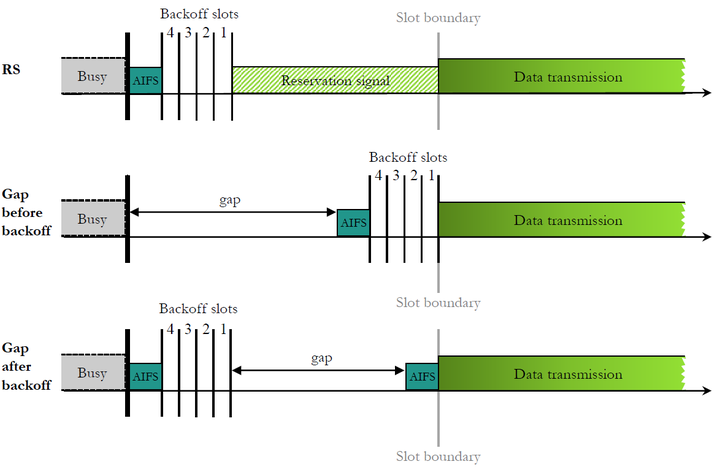Downlink channel access performance of NR-U: Impact of numerology and mini-slots on coexistence with Wi-Fi in the 5 GHz band
 A comparison of how LAA/NR-U can adapt their scheduled transmissions, which have to start at a slot boundary, to the random access nature of unlicensed channels.
A comparison of how LAA/NR-U can adapt their scheduled transmissions, which have to start at a slot boundary, to the random access nature of unlicensed channels.
Abstract
Coexistence between cellular systems and Wi-Fi gained the attention of the research community when LTE License Assisted Access (LAA) entered the unlicensed band. The recent introduction of NR-U as part of 5G introduces new coexistence opportunities because it implements scalable numerology (flexible subcarrier spacing and OFDM symbol lengths), and non-slot based scheduling (mini-slots), which considerably impact channel access. This paper analyzes the impact of NR-U settings on its coexistence with Wi-Fi networks and compares it with LAA operation using simulations and experiments. First, we propose a downlink channel access simulation model, which addresses the problem of the dependency and non-uniformity of transmission attempts of different nodes, as a result of the synchronization mechanism introduced by NR-U. Second, we validate the accuracy of the proposed model using FPGA-based LAA, NR-U, and Wi-Fi prototypes with over-the-air transmissions. Additionally, we show that replacing LAA with NR-U would not only allow to overcome the problem of bandwidth wastage caused by reservation signals but also, in some cases, to preserve fairness in channel access for both scheduled and random-access systems. Finally, we conclude that fair coexistence of the aforementioned systems in unlicensed bands is not guaranteed in general, and novel mechanisms are necessary for improving the sharing of resources between scheduled and contention-based technologies.